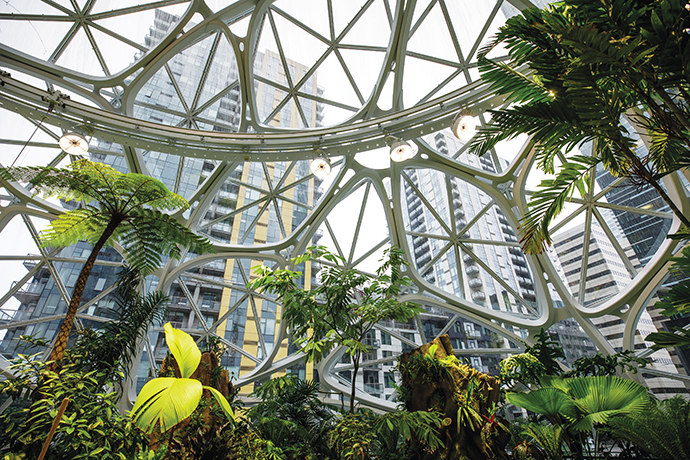Around the world, people are building on greater Seattle’s successful business legacy — most of the time without any idea they’re doing it.
Consider your morning coffee. Since getting its start back in 1971 out of a small storefront in Seattle’s famed Pike Place Market, Starbucks has become a world-wide coffee phenomenon.
If you’ve flown recently, odds are high the aircraft was manufactured by The Boeing Company, in Everett or Renton. Perhaps you bought your plane ticket online through Bellevue-based Expedia. Going shopping? Costco Wholesale, Recreation Equipment Inc. (REI) and Nordstrom are all homegrown and headquartered in the Puget Sound region, as is e-commerce giant Amazon.
The greater Seattle region – running north of Everett to south of Tacoma – is home to hundreds of global companies like those, as well as a little outfit called Microsoft, truck maker PACCAR and thousands of small to medium-sized companies. Additionally, hundreds of foreign-owned companies have based operations in the region, including giants such as Nintendo, The Pokémon Company International, T-Mobile, Novo Nordisk, Siemens, Infosys, Alibaba Group and more. Two of the three publicly traded U.S. companies to achieve a market value of $1 trillion were founded in greater Seattle — Microsoft and Amazon.
Why do so many companies want to call Seattle home? For starters, the greater Seattle region is a low-tax environment and is one of only seven states without personal income tax. Additionally, the state puts a limit on increases in property tax to 1 percent annually, which keeps the property tax rate growth lower than the rate of inflation. There’s also no tax on inventory, dividends, interest or capital gains.
“You look at the tech industry with companies like Microsoft and Amazon, and you look at the retail industry, including Starbucks, Nordstrom and Costco, and what you have is a diversified economic base of very innovative businesses founded here in Seattle,” says Kevin Johnson, president and CEO of Starbucks Coffee Company.
Of course, the region’s high quality of life and ample amenities are also enough to catch anyone’s attention. Whether it’s watching the Seahawks play at CenturyLink Field or the Mariners at T-Mobile Park, climbing to the top of Mount Rainier or any of the other stunning hikes in the Cascade and Olympic Mountains, or watching the best names in music play at local venues, the area offers fun for all ages.
And with a lower cost than similar metro areas — rating 6.3 out of 10 stars in value based on a comparison of housing costs to median household income and annual cost of living, according to U.S. News and Market metrics — businesses are eager to move into and expand across the region.
“It’s a big city with a small-town feel,” says Susan Mullaney, president of Kaiser Permanente Washington. “Seattle isn’t trying to be anything else but Seattle, and I love that about it.”
The Talent Equation
When it comes to attracting talent to a region, greater Seattle has all the right elements: ample opportunities to work with the best and brightest minds at the most innovative companies in the world, stunning natural scenery and outdoor recreation, world-class urban amenities and a uniquely high quality of life.
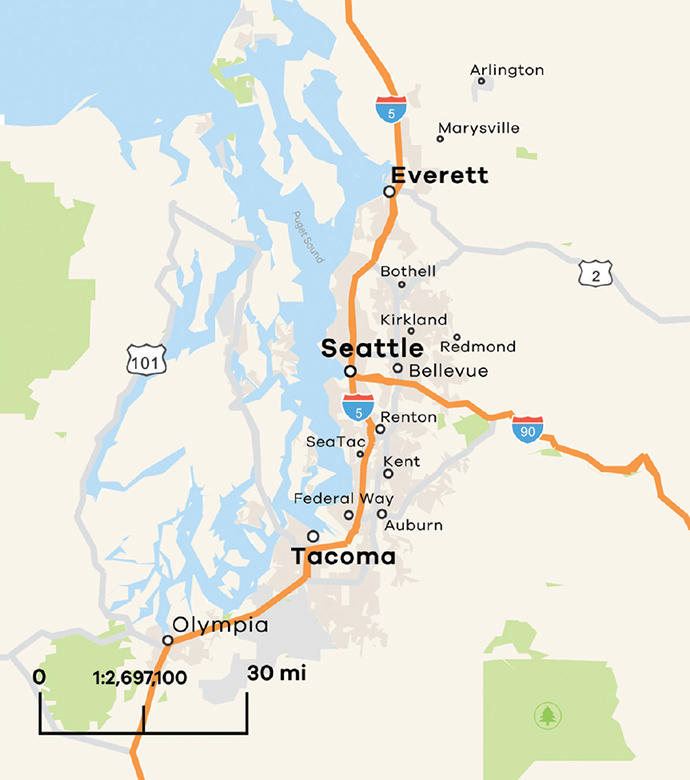
“The Seattle region has become an amazingly diverse, cosmopolitan and interesting place to live. Like so many people who have moved here from around the world, I can’t imagine calling any other place home,” said Brad Smith, president of Microsoft.
The region has a strong and growing workforce of 2.1 million people. Greater Seattle adds 60,000 new people each year, two-thirds of which are owed to net migration. They come from other U.S. locations, but they come from farther away too: Approximately 19 percent of the region’s 3.9 million residents were born outside of the U.S.
Homegrown talent is also easy to come by with a robust pipeline of 34 public and private universities and community colleges in the region, including two world-class research universities: The University of Washington (UW) and Washington State University (WSU), whose main campus is out east in Pullman, WA., but which operates several satellite campuses in greater Seattle.
A recent report released by the U.S. Census Bureau ranked Seattle the No. 1 most educated big city in America, beating out San Francisco at No. 2 and Washington D.C. at No. 3. According to the report, 63 percent of Seattle residents over 25 have a college degree. In fact, 71 percent of the region’s residents have at least some post-secondary education and 93 percent have a high school diploma or higher. Moreover, BLS statistics show that in 2017 the metro area was No. 7 in the nation in STEM jobs percentage, at 11 percent.
“Seattle isn’t trying to be anything else but Seattle, and I love that about it.”
UW was ranked as the top public university on Reuters’ Top 100: The World’s Most Innovative Universities. In 2018, the university received $1.35 billion in federal research money — the most awarded to any public U.S. university. Additionally, the university’s Paul G. Allen School of Computer Science and Engineering is expanding to be able to increase the number of graduates each year from 250 to more than 620.
The Global Innovation Exchange (GIX) is a new graduate program partnership between Microsoft, UW and Tsinghua University in China and recently celebrated its first graduating class, a group of 37 students from around the world. As part of the program, the students created 10 team projects sponsored by various industry partners including Microsoft, Boeing, T-Mobile, AT&T and Chinese technology company Baidu. Company representatives pitched loosely defined projects to the students and mentored teams as they developed their ideas leveraging the companies’ technologies.
“The students are able to take the latest research from industry, build on top of it and show what can be achieved,” says Ranveer Chandra, chief scientist for Microsoft Azure Global. “This kind of an industry-academic collaboration, where industry’s not just handing off something to students but providing them with cutting-edge research and working closely with them, is something I haven’t seen before as part of a curriculum.”
Another compelling partnership between local universities and industry is Amazon Catalyst. The Catalyst program is offered through a partnership with both UW and WSU, and aims to support students and researchers through mentorship and funding as they work to bring ideas to market. Since its inception, the program has seen the creation of products ranging from genetically modified houseplants that trap pollutants to self-cleaning solar panels, 3D printers, sensors that target cancer cells and even child-friendly iron supplements.
Innovation Central
Seattle didn’t earn its reputation as the world’s Cloud Capital for its overcast skies, but rather for its status as a major hub of technology.
Not only do two of the industry’s biggest cloud computing players, Amazon Web Services and Microsoft Azure, call Seattle home, but Google Cloud also has a large part of its engineering team based in the region. According to data from Gartner, Inc., the booming cloud software market reached over $72 billion in revenue in 2018 and will surpass $113.1 billion by 2021.
German automaker Mercedes-Benz has a Seattle outpost staffed with 150 software engineers to take advantage of the region’s high-tech sector. These engineers are focused on cloud computing services that manage and analyze data garnered from internet-connected automobiles.
No. 1 Fastest Growing Big City in the U.S. This Decade
No. 1 Forbes America’s Best Places for Business & Careers
Indeed, more than 100 companies headquartered outside the region operate R&D and engineering centers in greater Seattle, including Salesforce, Adobe, Disney, Dropbox, HBO, HP, Airbnb, IBM, Facebook, Apple, Indeed, Snapchat, Uber and Twitter.
With so much talent concentrated in one area and so many partnerships between industry and education, the Seattle startup scene is alive and well. Indeed, the region’s overall spirit of inclusivity and collaboration allows companies to fuel one another and the region in turn.
Consider the case of Zulily. From its inception in 2010, Zulily became one of the few retailers in history to exceed $1 billion in annual net sales in five years. The only other retail brands to hit $1 billion in less time are Amazon and Old Navy. In 2015, the e-commerce clothing company targeted to women and children was sold to QVC for $2.4 billion. Zulily continues to operate out of its Seattle headquarters.
Another notable example of Seattle’s ability to grow business is found in AI tech and machine learning startup TURI, founded by a UW computer science professor in 2013 and sold to Apple for $200 million in 2016.
Several other Seattle-based startups have also reached household-name status, including Redfin, DocuSign, Remitly and pop culture toy maker Funko.
History in the Making
Fortune 500 companies in greater Seattle are family. The Weyerhaeuser timber empire — still headquartered here after 119 years — attracted Bill Boeing, whose generations of engineers and computer programmers fostered Microsoft, and the list goes on. Tech and manufacturing remain integrally connected in greater Seattle, fueling a diverse and collaborative ecosystem of makers.
The Arlington Marysville Manufacturing Industrial Center (AMMIC) — locally known as “the MIC” — is a hub of industrial activity that is the second largest manufacturing and industrial center in Snohomish County.
The MIC includes 4,019 acres, with nearly 1,762 acres consisting of lands with the capacity for additional development including partially used sites, redevelopable sites and vacant sites. Sites within the MIC receive a 10-year city and county property tax exemption for manufacturing and industrial uses pending the creation of at least 25 new full-time jobs paying a family wage of $18 an hour.
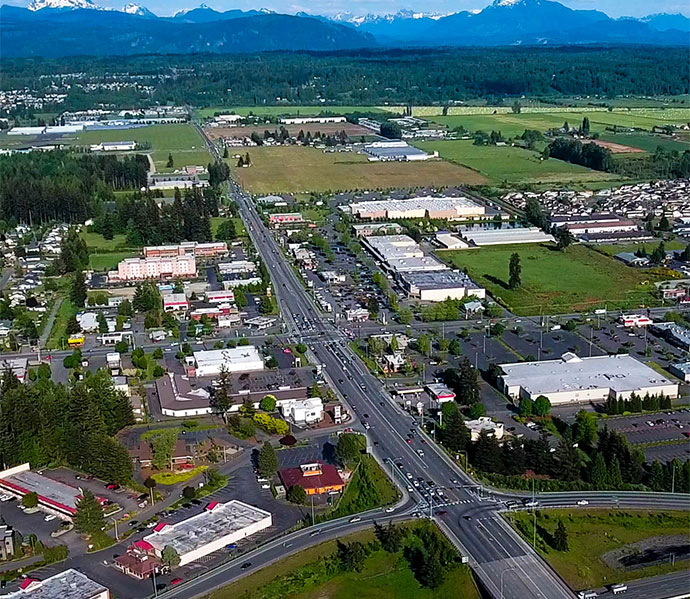
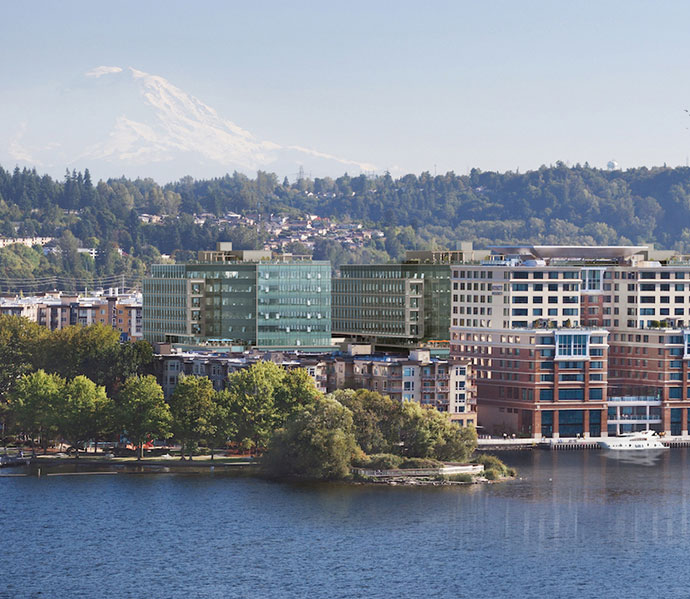
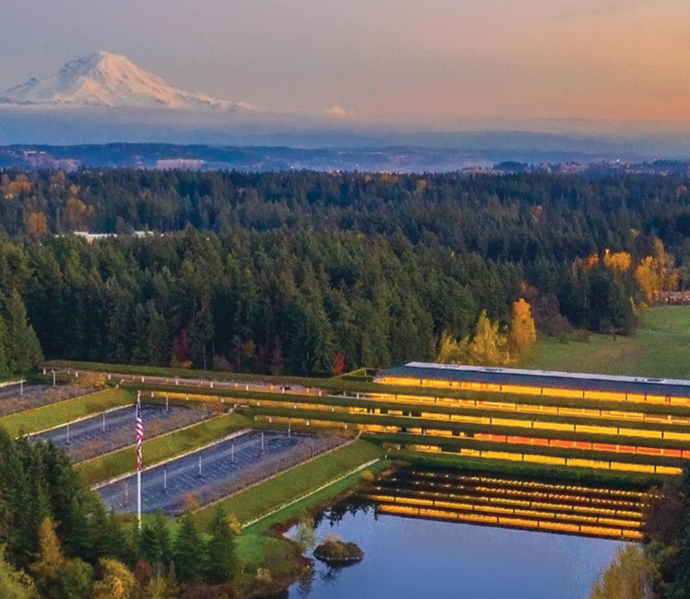
Arlington Mayor Barbara Tolbert says the community has taken a good, hard look at how it can help businesses succeed in the city. The bottom line, she says, is that the people of Arlington are problem solvers who will get out of the way of business and keep their community vibrant at the same time.
“We really looked internally and externally to figure out how to have business come knock on our door,” Tolbert says. “We streamlined all of our many processes so we can shorten the time frame to get permits.”
Soundview Innovation Campus in Everett offers companies an unmatched concentration of talent in manufacturing, aerospace, applied materials, robotics, sensors and additive manufacturing where collaborations between sectors can inspire new ideas.
Nearby, Bothell is the region’s hub of biomedical innovation and manufacturing. What is researched at Seattle’s famed South Lake Union biopharma companies is further developed and brought to market in Bothell; home to FujiFilm Sonosite, Philips and Seattle Genetics.
Located just east of Seattle, the Innovation Triangle encompasses the communities of Bellevue, Kirkland and Redmond, and is home to such world-class companies as Microsoft, T-Mobile, Tableau and more. The Innovation Triangle is focused on recruiting companies within the fields of enterprise software, e-commerce, interactive media, commercial space and big data.
“I like to describe Bellevue as Seattle’s largest most tech-centered, future-focused suburb,” says Jesse Canedo, Chief Economic Development Officer of the City of Bellevue. “We are a large community of about 100,000 residents and we have about 160,000 jobs. So, we’re definitely a large regional tech center. Back in the day, Microsoft drew in a lot of technology workers and bright minds. They created spinoff companies and helped create Amazon. So, now all of this ecosystem has really started to stir. Companies know if they’re looking for the best tech talent in the world, they’re likely to find it here in the Puget Sound region.”
South of the triangle, the cities of Renton and Federal Way are hubs of technology, innovation and advanced manufacturing.
The Boeing Company and PACCAR are leading manufacturing and R&D in Renton, while Alliance Packaging and TrojanLitho are producing best-in-class packaging products in the city. Visitors to the new Hyatt Regency in the Southport area of Renton look out on Lake Washington and down at Boeing planes readying for delivery. The adjacent 700,000 square foot “Class A” Southport Technology Campus provides tech jobs closer to home south of Seattle.
The long-time home of Weyerhaeuser, Federal Way is nestled between two mountain ranges and hugs the shoreline of the picturesque Puget Sound inlet. Like many communities in the region, Federal Way offers immediate access to the area’s abundant natural beauty, a perk especially for those who love the outdoors.
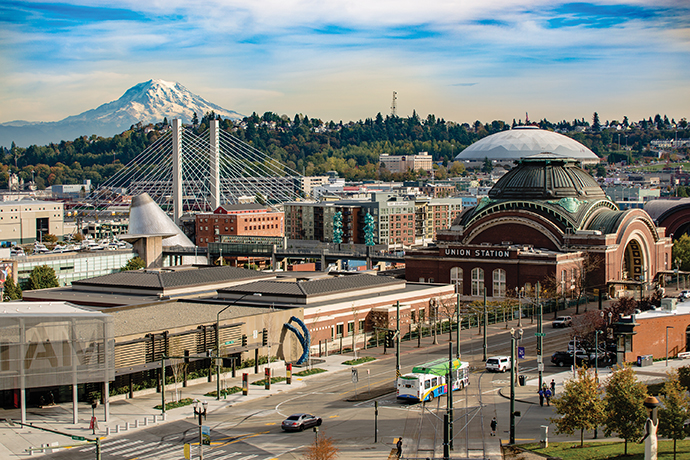
Over the last decade, Tacoma has experienced a surge of growth in attracting international businesses, with Chinese developers investing in a 22-story four-star hotel and mixed-use project at the Greater Tacoma Convention Center and the Tacoma Town Center in the city’s brewery district. Tacoma — the region’s second largest city — is welcoming cybersecurity and tech companies, including InfoBlox and Topia Technology, drawn by the UW-Tacoma graduate program in cybersecurity and 13,000 military service members transitioning into the workforce each year – many from nearby Joint Base Lewis-McChord. The city is also minutes away from Chambers Bay Golf Course, host to the 2015 U.S. Open.
$70 Billion Dedicated to Transportation Infrastructure
116 Total Miles of Transit Will Connect Everett, Seattle, Tacoma & The East Side
“Tacoma is a city that welcomes businesses large and small,” says Tacoma Mayor Victoria Woodards. “They are a part of our community tapestry and they help make us the dynamic and innovative city that we are. We are a mid-sized city that offers an incomparable quality of life and state-of-the-art health care and educational systems combined with competitively priced real estate, resulting in a vibrant community where both residents and businesses thrive.”
Military bases — including Joint Base Lewis-McChord, Naval Station Everett, Naval Air Station Whidbey Island, Naval Base Kitsap, and U.S. Coast Guard District 13 in greater Seattle — are the second largest public employer in Washington, employing more than 127,000 active duty, reserve, guard and civilian personnel. The state is home to over 540,000 veterans including 71,000 retirees and 88,674 military families. Washington’s military and defense community supports over $13 billion in annual procurement, representing nearly 3 percent of the state’s GDP.
Ride the Wave
As the Puget Sound region continues to grow — some estimates forecast the region will swell to 5.8 million people and 3.4 million jobs by 2050 — area leaders and voters have taken a number of key steps to ensure a smooth and swift commute for years to come. In fact, more than $70 billion is earmarked for infrastructure investments in the region.
In 2016, voters approved a 25-year, $54 billion transportation package, Sound Transit 3, to expand future connections with commuter rail, light rail and bus rapid transit. The investment will create an additional 62 miles of light rail to complete a 116-mile system that will take commuters north and south from Everett to Tacoma and east and west to West Seattle to Issaquah. Expanded connections build on more than 13,000 existing transit stops in the region.
Connecting Washington is a 16-year, $16 billion state-funded initiative that will further improve the state’s highways, roads and ferries. The investment also aims to ease traffic congestion and create and improve sustainable transportation options like bike and pedestrian paths.
The City of Bellevue has taken a unique approach to ease its rush hour headaches: the CommutePool Network. This flexible, electric, autonomous shared mobility network combines the latest transportation technologies and an innovative public/private business model that will make getting around the city easier and quicker than ever.
Similar to popular rideshare apps like Uber and Lyft, the CommutePool Network will take workers to and from their places of employment in autonomous vehicles.
Companies like Amazon, Microsoft and Google’s self-driving vehicle company, Waymo, are at the forefront of the autonomous revolution and in Bellevue’s backdoor. In fact, Google, which has offices in Kirkland and Seattle, is testing its autonomous vehicles on the Eastside.
“It’s really an amazing thing to be able to tap into the expertise of the companies that surround us,” says Steve Marshall, Transportation Technology Partnership Manager for the City of Bellevue. “PACCAR, for example, is making trucks that will be autonomous and electric, and they’re headquartered in Bellevue. Boeing is looking at making a lot of other vehicles (autonomous air taxis), and Amazon is directly investing in vehicles that are autonomous.”
Unique transit options are abundant in the region. Kenmore Air and Harbour Air, two of the largest seaplane operations in the world, land right in Seattle’s Lake Union. Called the “Nerd Bird,” daily flights connect 550,000 passengers a year along the Cascadia Innovation Corridor, with tech talent and tourists able to fly from Vancouver, B.C. to Seattle in an hour. Soon, fast ferries will connect tech campuses in South Lake Union to the Southport tech campus in Renton, adding a new commute option between south King County and Seattle.
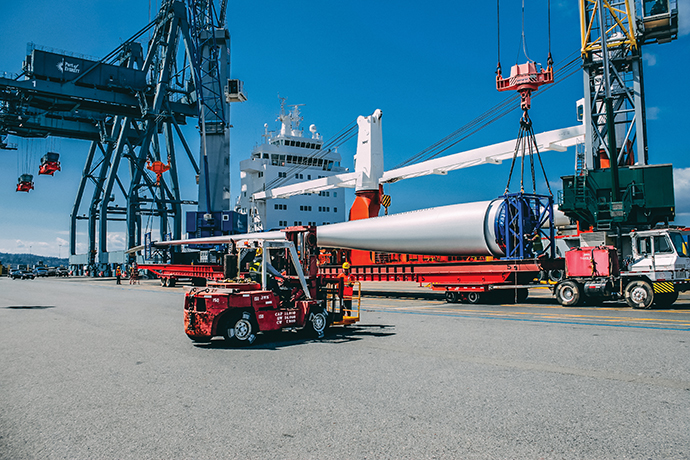
Working together as the Northwest Seaport Alliance (NSWA), the ports of Seattle and Tacoma are the fourth-largest container gateway in North America and a major center for bulk, breakbulk, project/heavy-lift cargoes, automobiles and trucks. In April 2019, the ports handled a record breaking 775,522 TEUs for total international container volumes. The Port of Everett is the state’s largest port by economic output, specializing in oversized cargo including 185-foot windmill blades and parts of the 747, 767, 777, and 777X airplane production lines. Ports in the region are modernizing to handle the ultra-large container vessels calling at West Coast facilities and are investing hundreds of millions in channel deepening and terminal improvements to remain a globally competitive gateway for Northwest shippers.
All Together
Part of the region’s culture is built around problem solving and working together — which makes perfect sense when considering the trials and challenges faced by the area’s original settlers.
Retail giant Nordstrom was founded in Seattle in 1901 after a young Swedish immigrant struck it rich with a $13,000 stake in the Klondike Gold Rush of the 1890s. Today, John Nordstrom’s shoe store on Fourth and Pike in Seattle anchors malls across the U.S. and Canada.
“People come up with ideas here. Then it transforms,” says former Washington Governor Chris Gregoire, now CEO of Challenge Seattle, an alliance of CEOs from 17 of the region’s largest employers. “We’re not selling coffee beans, we’re selling drinks. What people have come to understand is this is a place of innovation, a place of culture, of thinking outside the box and being willing to take risks. Most of my CEOs firmly believe that if you’re not taking risks you’re probably not innovating. I don’t know if that’s true everywhere, but there’s a corporate culture here where our companies want to be good citizens. They want to give back, to be a part of a community.”
“Like so many people who have moved here from elsewhere in the world, I’ve never wanted to live anywhere else.”
Indeed, the region is home to several philanthropic organizations including The Bill & Melinda Gates Foundation, PATH, Vulcan’s Smart City Challenge and Fred Hutchison Cancer Research Center. The region is a significant contributor to broader social impact efforts with over $4.6 billion in direct grantee support from the Bill & Melinda Gates Foundation alone in 2016.
“We have a welcome mat out, and that’s kind of who we are,” Gregoire says. “The result of which is that we are attracting talent from all over — not just the country, but the world — who want to be a part of that.”
Come to Seattle
Leave your assumptions at the door.
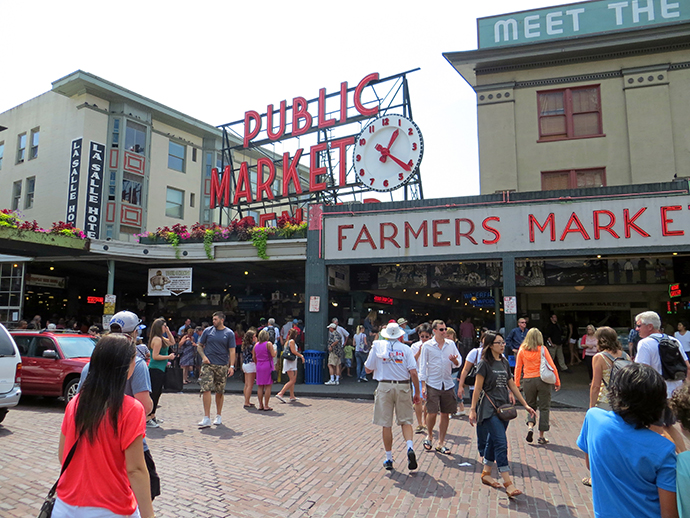
As I packed my bags for my first visit to Seattle, I made sure to include what I assumed to be the region’s customary uniform: coat, umbrella, rainboots.
It didn’t take long to realize I should have packed T-shirts and sunscreen.
On one of the multiple dry, warm days of my trip, I paid a visit to the office of Brian McGowan, CEO of Greater Seattle Partners. Pointing to my sunburned face, I explained my folly. McGowan, who moved to the region after nearly a decade of economic development in Atlanta — where Site Selection is headquartered — laughed and said that’s a typical misconception.
“It doesn’t rain every day here,” he said, gesturing toward the clear blue sky beyond his window. “It actually rains more in 43 other U.S. cities than in Seattle. The climate is very temperate here, so it doesn’t get really cold or really hot. The weather here is really spectacular.”
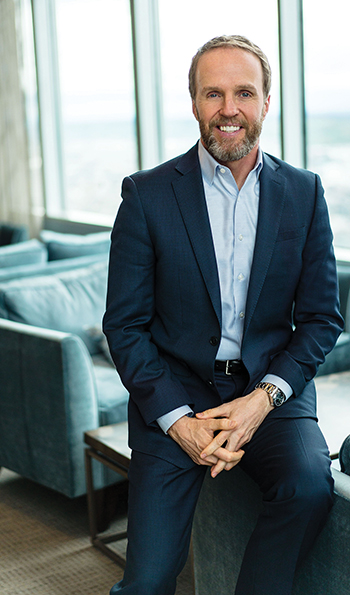
Prior to taking on his new role as head of GSP in August 2018, McGowan’s impressive resume includes stints as the Deputy Assistant Secretary and COO for the US Economic Development Administration under the Obama administration and Deputy Secretary for Economic Development and Commerce for the State of California under Gov. Arnold Schwarzenegger. I spoke with McGowan about what he was surprised to find in the region, and his ambitions for its dynamic business culture.
Site Selection: What does Greater Seattle Partners aim to do for the region?
Brian McGowan: GSP is a brand new regional economic development corporation. We cover the three-county region known as Seattle. Our job is to make sure that our economy is growing in a sustainable, inclusive and equitable way. We want to position ourselves for future growth.
We have all of these emerging industries. For example, Seattle is the cloud computing capital of the world. There is no place in the world that does cloud computing better than this region does. In fact, a lot of Silicon Valley companies are moving their cloud computing operations here. That’s why you are seeing Oracle, Google, Apple all of these companies taking up office space here. Autonomous vehicles, artificial intelligence, blockchain, cancer research — we have all of these next-gen industries that a lot of cities are pursuing. A big part of GSP is making sure we’re at the forefront of these industries.
But we also want to make sure people have the full picture of the Seattle region, not just the stereotypes. This place is a spectacular place to live and people come here to be inspired and then they change the world. We have Everett and Tacoma, Bellevue and Redmond. A big part of our job is to make sure the world knows our story.
This region is really creating the future that we’re all going to live in, no matter where you are in the world. The industries that we have created here have disrupted the way businesses all over the world do what they do. Just look at Amazon, Microsoft, Boeing — any of our big companies — and how we all think and work and interact with each other. That’s going to continue. We’re only seeing the beginning of that in this region.
How would you describe the overall business climate in the greater Seattle region?
McGowan: This is a robust and business friendly climate. It’s an extremely diverse economy, which I find interesting. When you compare this region to other economies across the United States, it’s very unique in that it’s not a one trick pony. We have big technology companies, agriculture, retail, logistics and we make things in this region. Most major American regions don’t make things anymore. And we make all kinds of things from wine to exercise equipment, space capsules and rocket engines to toys. And of course, there’s Boeing with 69,000 employees here. It’s kind of extraordinary because when you think “how do you create an inclusive economy?” well, that’s one way you do it — manufacturing.
There are so many brands that come from here — Nordstrom and Costco, for example. I didn’t realize Costco was from the Seattle region, and I happen to live in Kirkland, which is a Costco brand. Weyerhaeuser is another of our Fortune 500 companies. We also have REI headquartered here. Tommy Bahama is headquartered here. Redfin, Zillow and Rover and a new company called Convoy are growing like crazy. There’s Expedia and Zulily. The list of national and global brands goes on and on.
Then you start to realize that all the major companies have an engineering operation here. Apple is expanding its operations here, Mercedes-Benz has an R&D facility here along with General Motors. Google is snapping up every available square foot they can find. Oracle, Disney, all the major brands are here. And they’re not doing back office stuff, they’re doing cutting edge, high end engineering.
With so many major companies expanding in the region and taking up office space, where do you foresee the next wave of growth occurring?
McGowan: The region is large. So, yes, it’s true that Seattle and Bellevue are really hot markets for office space right now and all the big tech companies are growing. Microsoft is tearing down their old campus and building a new one in the same place. Expedia, REI, and Weyerhaeuser have built new headquarters within the region. They’re doubling down here. I think that’s an interesting statement about their commitment to the region. They stay here because of the quality of life and our talented workforce. This city has more construction cranes than any city in America for three years running. There are lots of opportunities to grow north and south. We are seeing companies who are starting to look into expanding or moving into other areas of the region as they consider their future growth.
Seattle is unique in the fact that so many companies get their start here and grow into major global powerhouses. What is it about this area that allows companies to scale to such heights?
McGowan: We have a lot of cutting-edge, industry-changing things going on here. Our culture in this region is really deep. It’s authentic. You see a lot of cities trying to figure out who they are that makes them unique from other places. The Seattle region doesn’t spend any time thinking about that, they just are. This is a region that has this quiet confidence. I mean, we are literally changing the world here. Inventing new things and technologies, curing diseases and cancer, and providing clean water technology. The largest foundation — the Bill and Melinda Gates Foundation — in the world is here. This region is doing really amazing things, but it’s not a place that feels like it needs to brag. People here put their head down and do the work, and when there are accolades, they’ll nod and get back to work, or at least that’s the attitude here. But that’s the Pacific Northwest. Understated. We solve problems. We move on.
Top Flight
When companies touch down in Puget Sound, they’re bound to take off.
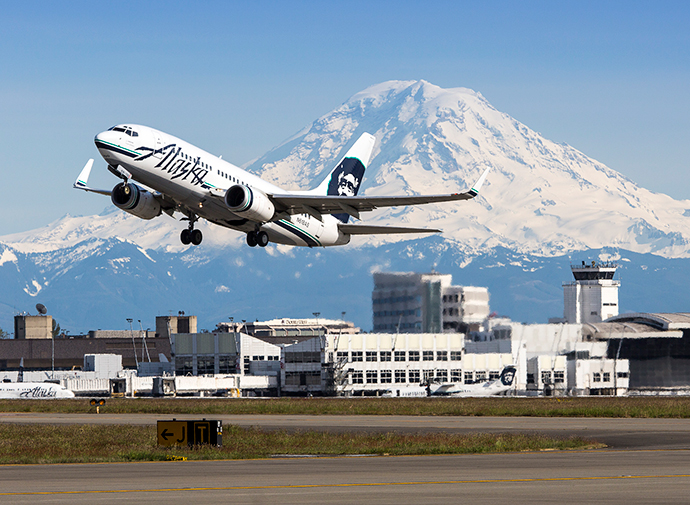
What started inside a small red barn on the shore of Seattle’s Duwamish Waterway a little more than a century ago has since grown into the world’s largest aerospace company — and turned the Puget Sound region into an industry powerhouse.
The Boeing Company was founded in Seattle in 1916 — in large part due to Washington’s rich and abundant timber resources. By the end of World War II, the company had become a leading producer of aircraft and was well established as the anchor of the global aerospace industry.
Today, the aerospace titan employs more than 140,000 people across the U.S. and in more than 65 countries, including more than 69,000 employees in Washington. More than 10,000 Boeing commercial jetliners — almost half of the world fleet — are in operation around the world, built at sites in Renton, Everett, and Frederickson. According to the company, about 90 percent of the world’s cargo is carried onboard Boeing planes.
While Boeing’s meteoric rise might seem like an isolated occurrence, it’s hardly the only company to experience the boundless growth that greater Seattle seems to offer.
A dense supercluster of more than 1,400 aerospace-related companies call the state home today, including Blue Origin, Spaceflight Industries and Vulcan Aerospace. In 2018, the Teal Group ranked Washington the most competitive location in the U.S. for aerospace design and manufacturing. Indeed, the sky’s the limit for the state’s $70 billion aerospace sector, which employs more than 136,000 people and exports more aircraft annually than California, Georgia, Florida, South Carolina, Arizona and Alabama combined.
To help promote the industry’s continued growth, the state offers companies in the aviation and space sectors several incentives, including reduced tax credits for preproduction development expenditures and property, sales and use tax exemptions for technology investments and construction of new manufacturing facilities.
Flight Path
Equidistant from Europe and Asia, Seattle-Tacoma International Airport (SeaTac) is one of the nation’s busiest airports, providing service to approximately 45.7 million passengers annually. SeaTac is home to 30 airlines serving 88 domestic and 24 international destinations — including more than 14 daily flights to Vancouver, B.C. in Canada, and twice-daily flights to Beijing, Tokyo and Seoul.
SeaTac is currently undergoing a $1.4 billion expansion. The fully renovated terminal is expected to open in 2021 and will allow the airport to accommodate 56 million passengers by 2027. Part of the expansion involves a $650 million expansion to the Alaska Airlines terminal and will include 20 gates operated exclusively by the airline. Brad Tilden, CEO of Alaska Air Group, says Alaska Airlines is “doubling down on Seattle.”

“We’re one of the gateways to Asia, but Seattle is actually closer to Asia than either L.A. or San Francisco,” he says. “We have fantastic connectivity. Alaska partners with a number of different airlines, and more than half the folks connecting at SeaTac airport come to us by way of Alaska [Airlines] or with one of our partners.”
The Seattle-based airline travels to more than 115 destinations with 1,200 daily flights and employs more than 23,000. It is also expanding its flights to nearby Paine Field Airport in Snohomish County.
For the better part of a century, Paine Field has been a working airport primarily supporting aircraft manufacturers like Boeing and the region’s many other aerospace businesses. In fact, nearly half of the aerospace manufacturing jobs in the state are located at or near Paine Field Business Park.
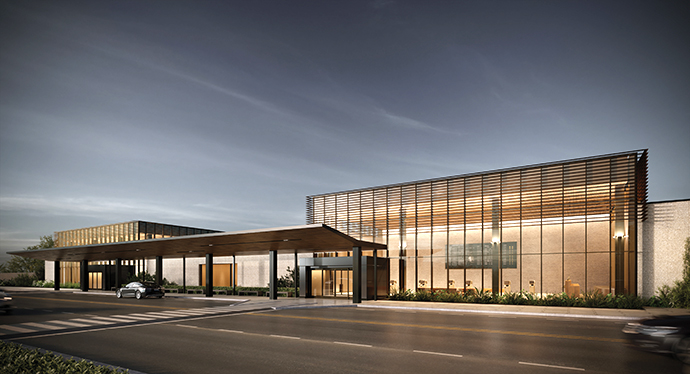
Just 24 miles from downtown Seattle, Paine Field recently began accepting commercial flights from Alaska and United Airlines. These flights save Puget Sound residents up to 80 minutes on their commutes. The airport sees about 30 takeoffs and landings each day from destinations like San Jose, San Francisco, and Denver.
“Everett is an incredible place to do business,” says Cassie Franklin, the first female mayor of Everett. “Now that Alaska and United Airlines serve Paine Field directly, businesses enjoy one more invaluable amenity in Everett. Whether a startup or an international corporation like our own Boeing Corporation and Funko, all companies can grow in Everett.”
Outer Space and Beyond
Did you know the first Lunar Rovers were built at Kent’s Boeing Space Center in 1969?
Though it’s been half a century since the Apollo 11 mission that brought the first men — and Kent’s manufacturing prowess — to the moon, the region hasn’t stopped reaching for the stars.
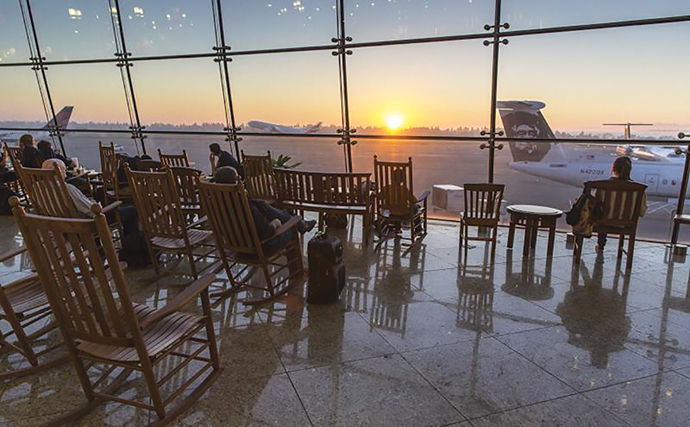
The Kent Valley is the second largest industrial park on the West Coast and the fifth in the nation. Several large companies in the park include The Boeing Company’s Integrated Defense Systems, WCP Solutions, Mikron Industries, Recreation Equipment, Inc. (REI) and the Starbucks Roasting Plant. While the region has long been in the business of making everyday items, its true claim to fame isn’t widely known.
“It’s kind of gone below the radar screen that a lot of the Seattle-area space industry is actually concentrated in the Kent Valley,” says Bill Ellis, chief economic development officer at City of Kent.
Blue Origin, founded by Amazon’s Jeff Bezos, is headquartered in Kent, some 20 minutes south of Seattle. The company’s facility is the hub of its operations and the design and manufacturing site for its New Shepard rockets and engines.
“We’re one of the gateways to Asia, but Seattle is actually closer to Asia than either L.A. or San Francisco.”
“Over the last few years Blue [Origin] has gone from about 300 employees to over 1,500 and they’re probably going to be adding a couple thousand more over the years to come,” says Ellis. “But I think it’s important to emphasize that they are just part of a larger aerospace and outer space cluster. “If you pulled the rooftops off of these buildings and were able to look inside at all the businesses, you’d find a diversity of industry and models,” says Ellis, gesturing toward the road lined with similar buildings.
Indeed, supplier companies like Pacific Metallurgical, Alaskan Copper & Brass, Tritech and Hytek Finishes — all in Kent — have experienced substantial growth as a result of the sector’s success.

Greater Seattle Partners is a leading public-private economic development corporation that drives investment into the greater Seattle region to create and sustain opportunity and prosperity for all.
For more information, contact Melinda Goforth, Managing Director of Lead Development at 206-310-9488 or go to www.greater-seattle.com.
This Investment Profile was prepared under the auspices of Greater Seattle Partners.
